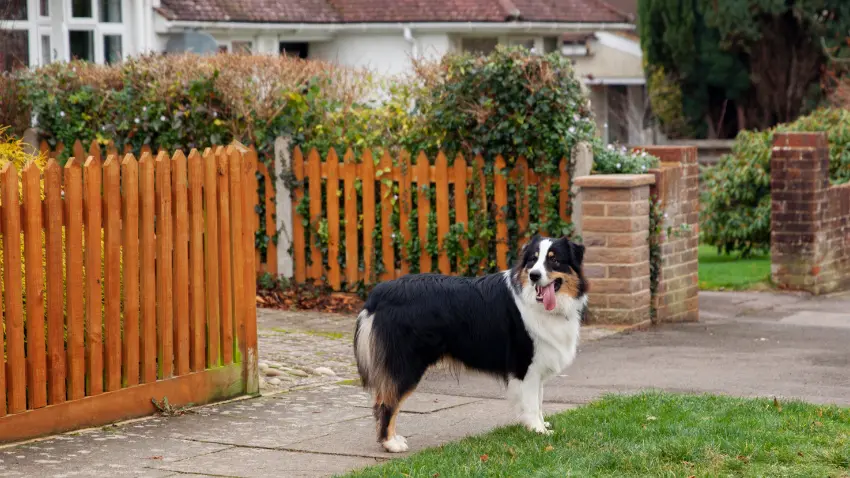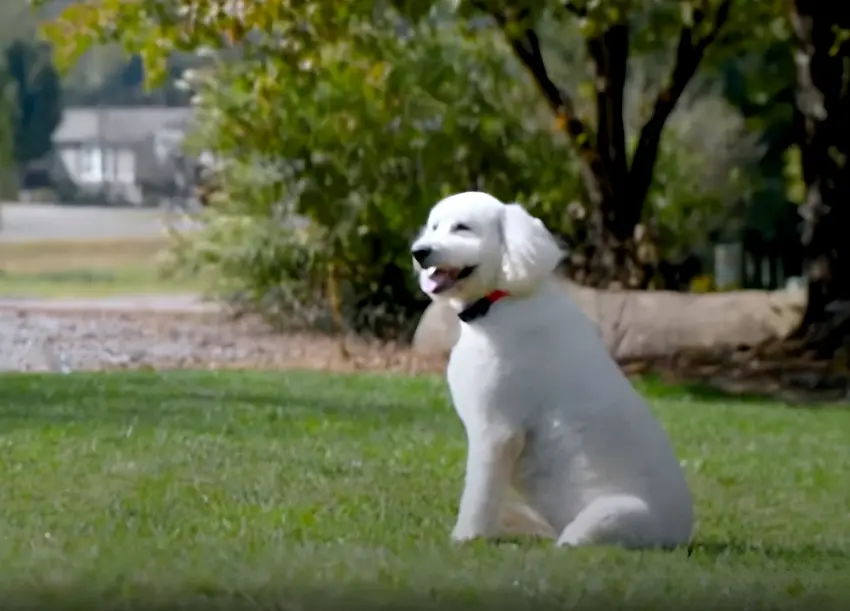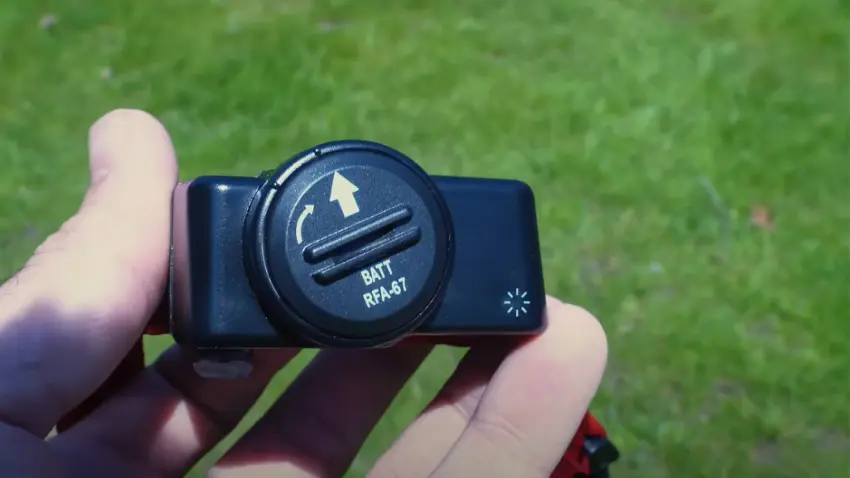4 Main Questions About Dog Wireless Fences
Wireless fences are modern solutions for Houdini dogs. It’s cheaper than putting up a physical fence around your yard. But what is the best wireless fence for dogs, and is it suitable for your pet? In this post, I’ll discuss some of the important points to know before you buy one for your dog. A wireless fence will be a huge asset in raising your dog, but you have to know its limits and how to implement it within your property.
1. How can I keep my dog in the yard without a fence?


If you don’t have a fence, it will be challenging or even impossible to keep your dog from escaping. Leashes and dog cable runs might be a convenient choice, but it has its limits. Also, these two methods require close supervision.
If you’re not at home, the best way to keep your dog within the yard is by using a wireless dog fence system. It’s composed of a receiver collar and a transmitter. There are no wires or physical barriers that you need to set up.
The best thing is that wireless fences are way cheaper than putting up an actual picket or chain-link fence in your yard.
Aside from that, wireless fences work without supervision. As long as you set the perimeter, you can leave your dog outdoors. However, you should check local regulations as some areas will still require a physical fence aside from installing a wireless type.
Proper training is also important to ensure that your dog will respond positively to the invisible fence.
2. How far will a wireless dog fence work?

Wireless dog fences have varying ranges. Some can cover a radius of 90 feet, while long-range units can reach half an acre. Nevertheless, you can find short-range units that will allow you to connect two transmitters to create a much larger perimeter.
Take note that if you want a wireless dog fence to have a wide range, you should remove any substantial blockages. Avoid placing the transmitter near walls that may block the radio signal connection with the collar.
Always follow the recommended distance on the specific wireless electric dog fence you’re going to buy. This is to ensure that the wireless fence will have a strong reach to prevent your dog from escaping.
How does a wireless invisible fence work?
A wireless dog fence uses a radio signal that connects the transmitter and the receiver collar. Through this, you can send an invisible perimeter within your property. When your dog runs beyond the set limit, its collar will set off and produce an electrostatic correction. Before the correction, there would be a beeping sound to warn your dog.
Many pet owners prefer wireless dog fences since it’s safer than wired ones. Also, they can train their dogs to respond to the beep so that they won’t experience an electrostatic correction.
Unlike an above-ground electric dog fence that you bury on the ground, wireless versions can be used straight from the box. There’s no need to dig trenches or check for broken wires underneath.
The question of whether it’s best for your dog or not depends on various situations. Some dogs thrive in a wireless fence, while others don’t.
How do you introduce a dog to an invisible fence?
Take note that wireless fences aren’t a set-it-then-forget-it system. You have to train your dog to respond properly to it.
So how do I train my dog to use a wireless fence? Here are some easy steps:
- First, place the stake flags along the perimeter that you set. This will serve as the visual marker for you and your dog.
- You should also put your dog on a leash and get some easy-to-eat treats.
- After that, turn the wireless fence on its lowest correction level. Usually, it would be a nick or a slight charge for a small dog. For a large dog, you can increase the intensity.
- Next, walk your dog slowly toward the edge of the fence. A few feet before your dog reaches the set barrier, the beep sound will go off. If your dog runs back to the safe zone, give it a treat.
- However, some dogs would ignore the beep and keep walking. By the time the canine breaches the perimeter, the electrostatic correction will be triggered. Again, if the dog runs back to safety, give it a treat.
Usually, it will take a few drills for your dog to understand how the wireless fence works. Be patient and keep the correction in its lowest setting. But if your dog seems to ignore the minor jolt, you should turn it up a notch. See if your dog will react differently.
As your dog recognizes the correction, it will avoid getting past the set limits. Once you’re sure that your dog won’t challenge the barrier, you can turn off the correction and just leave the warning beep.
Keep the training sessions short to prevent your dog from losing interest. Also, it may take weeks for some dogs to fully understand how your wireless fence system works.
How do you set up a wireless and stay fence?
Setting up a wireless fence is pretty easy. First, choose a location to install the transmitter. Make sure that it’s in the open and there’s a power source nearby. A shed will be a great choice as long as there are no walls or major blockages that may impede the signal. Your garage will also work.
Take note that wireless fences create a circular barrier. If you want to contain your dog in a specific area in your yard, you should install the transmitter right in the middle of it. Here’s how the installation goes:
- Choose a spot where the transmitter will not be exposed to outdoor elements like rain and direct sunlight. You should also avoid metal objects that will interfere with the signal.
- After installing the transmitter, the next step is to choose a perimeter range. Make sure that you leave a few meters of distance between the end of your property and the perimeter you’re going to set. This will serve as a buffer in case your stubborn dog tries to run away.
- Once done, turn the receiver collar on and see if it connects well with the transmitter.
For our wireless fence, I personally tried wearing the collar on my wrist and walking past the perimeter I set. If the correction and warning sound goes off, you have the system properly configured. The only thing you have to do is put the waterproof collar on your dog.
3. How close can a dog get to an invisible fence?
Invisible dog fences have adjustable ranges, so the answer here varies. But in terms of correction, the warning beep will set off about 1 to 5 feet from the boundary. If your dog keeps approaching, it will receive a correction the moment the collar exits the invisible perimeter.
Nevertheless, you can always train your dog to return to the safe zone even before it reaches the correction zone. Utilize the warning beep and positive reinforcement to ensure that your pet won’t try to breach the limits.
Does an invisible fence hurt the dog?
Unlike an electric fence, invisible counterparts are unlikely to hurt a dog. It uses an electrostatic charge powered by a battery, so there’s no way your dog will be seriously electrocuted.
Also, you should choose the right correction level based on what your dog can tolerate. Always aim for the lowest possible setting to prevent your dog from developing aggressive tendencies due to excessive correction.
If configured properly, an invisible dog fence will not cause harm to your dog. As a dog owner, this fence will be a useful tool for training and keeping the canine safe.
How long do you leave invisible fence flags up?
I suggest keeping the invisible fence flags up for at least 30 days. This will let your dog remember that barrier. Some dogs will learn fast, but there’s nothing to lose if you’ll leave the markers longer.
Once you’ve removed the flags, you should observe your dog. Some dogs will try to run past the barrier, thinking that there’s no longer a fence. You may need to brush up with the training to ensure that your dog will respond positively to the invisible barrier.
Does an invisible fence have to be buried?
Take note that there are two types of invisible fences: an underground and wireless type. For the underground fence, you’d have to bury a wire to create a hidden barrier in your yard. This also uses a radio signal to detect if the receiver collar is coming near. If the dog walks past the underground wire, the correction will set off.
An invisible underground fence will require digging a trench and planting the wire underneath. If you have a large yard to cover, this translates to a lot of work.
Does an invisible fence have to make a complete loop?
Yes, you need to make a complete loop if you’re setting up an invisible underground fence. This way, the two ends will meet, and there would be no dead spots. You can connect both ends by twisting them together so that you can connect them to the transmitter.
Without a complete loop, your dog will find a dead spot where it can escape. This will defeat the purpose of setting up an invisible fence.
4. How much does a wireless dog fence cost?

A wireless dog fence is available for a wide range of prices. You can find budget options for just $200, but this only offers a very limited range. More expensive ones can range from $900 to $1,500, which can cover more ground.
Aside from the range, the transmitter’s quality and the strength of the signal will also add up to the price. If you want a wireless dog fence that lasts long, I suggest investing in a durable unit. In the long run, the extra bucks will pay off.
How much is an invisible fence for 1 acre?
A 1-acre coverage for wireless dog fences will cost you $400 or so. This is cheaper because you only need a transmitter and a dog collar. Also, installation can be done on your own without special tools.
If you’re aiming for an underground version, it will definitely cost more due to the materials and labor needed for the installation. A local fence company like PetSafe would charge around $2.50 per foot. Meanwhile, DIY work will cost you $1.50, but you’d be dealing with all the heavy work.
With this pricing, an acre of invisible ground dog fence will cost roughly $1,250 or more. You’ll incur additional costs if there are blockages or fixes needed to perform in your yard.
How much does it cost to put up a backyard fence?
If you’re going to put up an actual backyard fence, it will cost you $13 to $50 for each linear foot. It’s expensive and can cost as much as $4,000 if you have a large backyard. This is the main reason why many dog owners resort to invisible fences instead.
While invisible fences don’t provide a physical barrier, it still keeps your dog in the yard. It will serve you well as long as you pair it with proper training.
Conclusion
What is the best wireless fence for dogs? There are many options in the market, so it’s important to know your yard’s size first. From there, you can narrow down your options. You should also consider your budget, installation requirements, and your dog’s tolerance of static correction.
